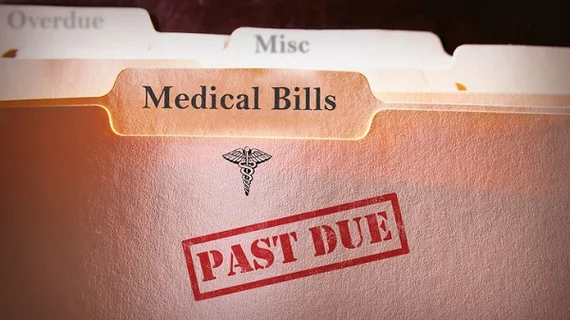Tens of thousands of radiologists and other docs align in opposing surprise-billing provision
Tens of thousands of radiologists and other medical doctors are aligning in opposition to one key provision in recently released rulemaking to ban surprise medical bills.
The Biden administration revealed its interim final rule on Thursday, outlining how the feds plan to settle payment disputes between payers and out-of-network providers. But the American College of Radiology, several other doc groups, and hospital lobbyists fiercely object to using an insurer-calculated “qualifying payment amount” as the starting point for negotiations. Generally, this would be the insurer’s median contracted rate for the same or similar service in the geographic area.
ACR has joined the American Society of Anesthesiologists, American Association of Neurological Surgeons and American Association of Orthopaedic Surgeons in fighting the regulation. Altogether, they represent more than 140,000 specialists.
“Today’s rule does not follow the congressional intent in implementing the law,” Beverly Philip, MD, a Harvard Medical School professor and president of the anesthesiology society, said in a joint statement from the four groups, issued Oct. 1. “The impact will be more record profits for insurers, who are the real winners of this rule, not patients or the physicians who have put their lives on the line throughout this pandemic.”
Congress first authorized the No Surprises Act in December as part of a year-end spending bill. ACR and others believe the new rule failed to honor lawmakers’ original aim and will lead to “drastic” payment cuts for imaging services, regardless of network status. The groups are concerned insurers will calculate these qualifying payment amounts “without meaningful oversight or transparency.” QPA also does not reflect actual payment rates, they claimed, and is “certain to be manipulated in their favor.”
Physicians, instead, want independent arbitrators to consider many factors when settling disputes, as spelled out in the original legislation. Those could include quality of outcomes, market share, patient acuity, scope of services at the facility, and prior contract history between the two parties. A bipartisan group of 97 House representatives in June urged the administration to avoid placing too much weight on any single factor (including the median network rate) in payer-provider payment negotiations, the groups noted.
Others have also come out in opposition to the interim rule. The American Medical Association highlighted its own recent study, which found that 73% of the nation’s insurer markets are “highly concentrated.” This typically results in higher premiums and narrower networks, a “root cause” of this issue, the AMA asserted.
“[The interim final rule] disregards the insurance industry’s role in creating the problem of surprise billing at the expense of independent physician practices whose ability to negotiate provider network contracts continues to erode,” President Gerald Harmon, MD, said in a statement.
The Radiology Business Management Association, Emergency Department Practice Management Association (representing ED business leaders) and Healthcare Business Management Association (revenue cycle leaders) echoed such concerns in their own joint announcement.
Meanwhile, the nation’s largest trade association for health insurance companies voiced support for the interim rule, arguing its arbitration approach will ensure businesses and families avoid unnecessary premium increases. Americas Health Insurance Plans also believes the rule will encourage more providers to join health plan networks, according to a Sept. 30 announcement.
“We are particularly encouraged to see the rules conform to the intent of the No Surprises Act and direct that arbitration awards must begin with a presumption that the appropriate out-of-network reimbursement is the qualified payment amount,” said AHIP President and CEO Matt Eyles. “This is the right approach to encourage hospitals, healthcare providers and health insurance providers to work together and negotiate in good faith.”

